Addressing Extreme Brick Spalling: Challenges and Solutions
In the past, here on our website, we’ve looked at the topic of brick spalling in many different articles and topics. We looked both at some of the causes of brick spalling, in historic brick masonry, and also the type of approaches that can be taken in restoration and preservation to prevent and deter the occurrence of further spalling and deterioration. Particularly
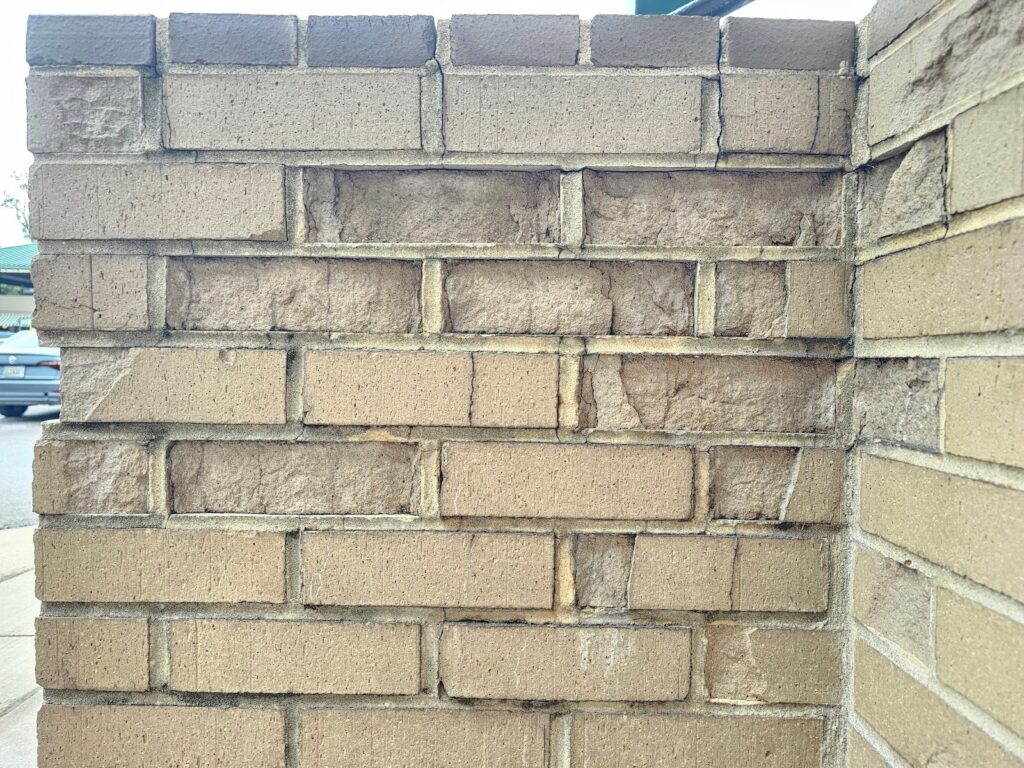
we’ve talked about restoration methodologies focused around properly repointing to avoid brick and masonry spalling.
The picture below shows a knee wall with an extreme amount of spalling. Here you can see that the mortar joints have largely remained intact but the faces of the bricks between each of the mortar joints, in most cases have cracked off or been deteriorated to the point that they’re ready to crack off. This is a perfect example of very bad brick spalling.
Brick spalling is a type of deterioration that affects a variety of types of masonry structures, particularly historic buildings made of brick or concrete. It occurs when the face of a brick or a thin layer of its surface flakes, peels, or cracks off. This damage is often caused or exacerbated by moisture penetration and freeze-thaw cycles, which create internal pressure within the brick.
The picture above takes a very direct, head-on view of the wall, but in the next picture below, we’re looking at it from more of an angle. From this perspective, you can see the degree to which the brick units facings are receding back within the original face of the wall.
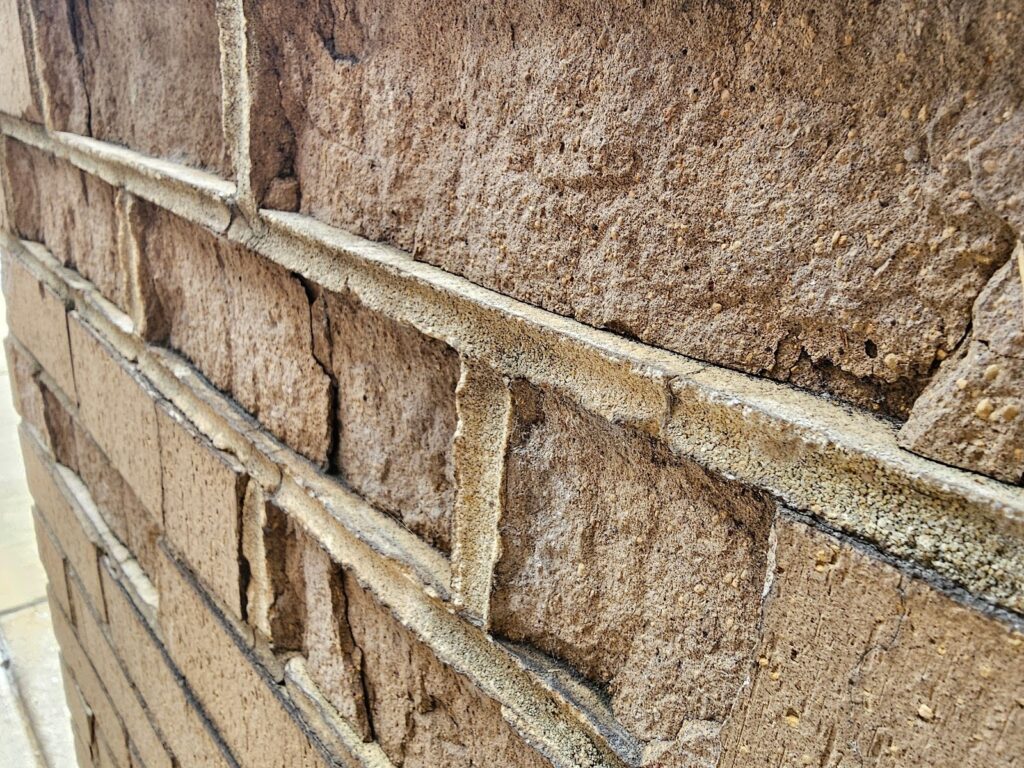
The next picture below looks from a low angle, facing upwards. Here you can see how deep the lower spalled area of brick recedes within the original face of the wall. This depth is over 5/8 of an inch into the face of the wall at the spots of the worst amount of spoiling.
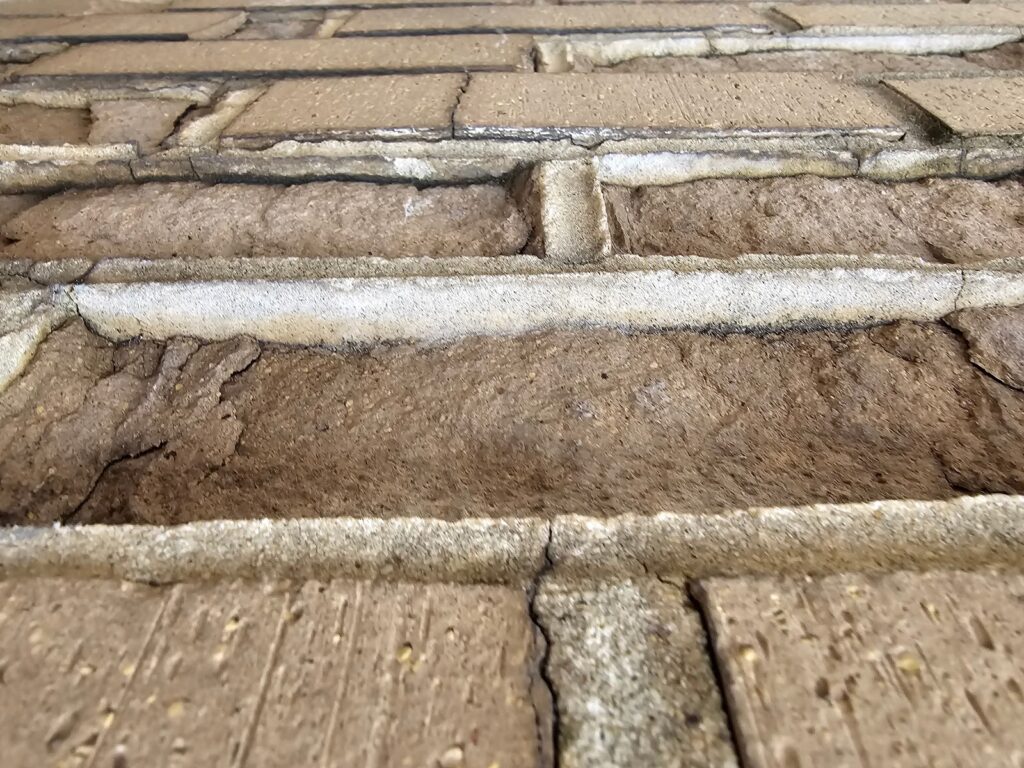
For damage this extensive, repointing or tuck pointing is generally not enough, in some cases entire portions of the wall must really be rebuilt before it can be effectively repaired. You can see that portions of the brick are deteriorated, more than just what’s already fallen off of the wall. Parts that remain are also damaged and you can see pronounced cracking that runs down within the remaining face of the brick.
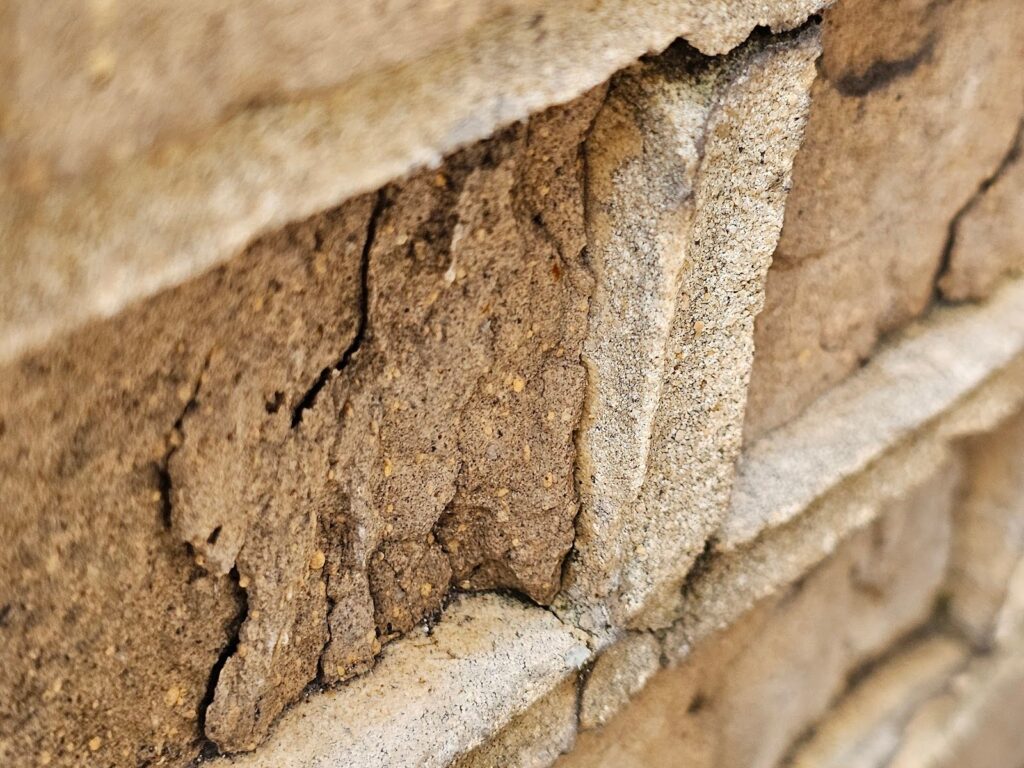
Here in Washington, DC, it’s abundantly clear that the overall largest factor that causes brick spalling, of our historic buildings, is improper repointing. And however, there are a variety of conditions and factors which can lead to brick spalling and falling. In most cases, these conditions can simply be corrected, before damage is extensive, by properly repointing, but they’re not all derived from improper repointing.
Other factors that can contribute to brick spalling include:
- Poor quality bricks or mortar
- Excessive moisture due to inadequate drainage or waterproofing
- Salt crystallization within the brick
- Chemical reactions between building materials
- Age and natural weathering
Spalling can compromise the structural integrity of a building if left untreated, leading to more severe damage over time. These pictures of this particular wall show that perfectly. It’s important to address brick spalling promptly with proper repair and preventative measures early to maintain the longevity and appearance of masonry structures.
The next picture below shows the same part of a remaining portion of a damaged brick and you can see there is a large section that is all but ready to flake off and could even be picked apart with something as light as a fingernail.
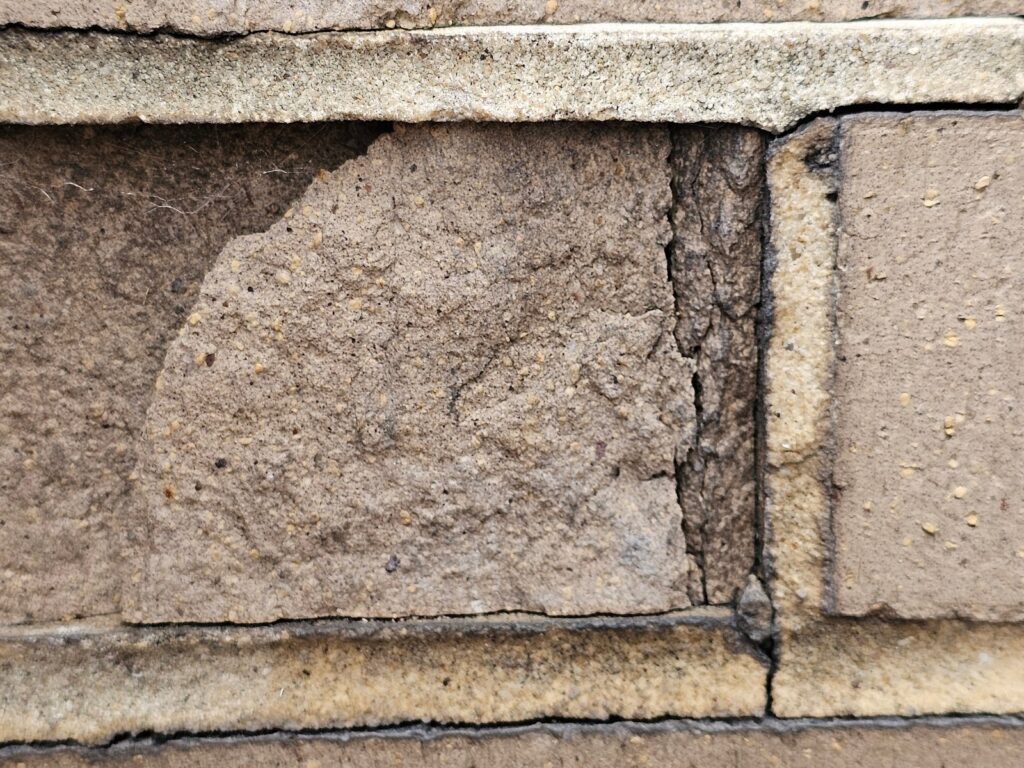
The section of the next photo below only includes bricks that have already been damaged. Even though some bricks may have more damage that’s hidden under the remaining surface, here every brick shows the signs of complete spalling of the face of the brick.
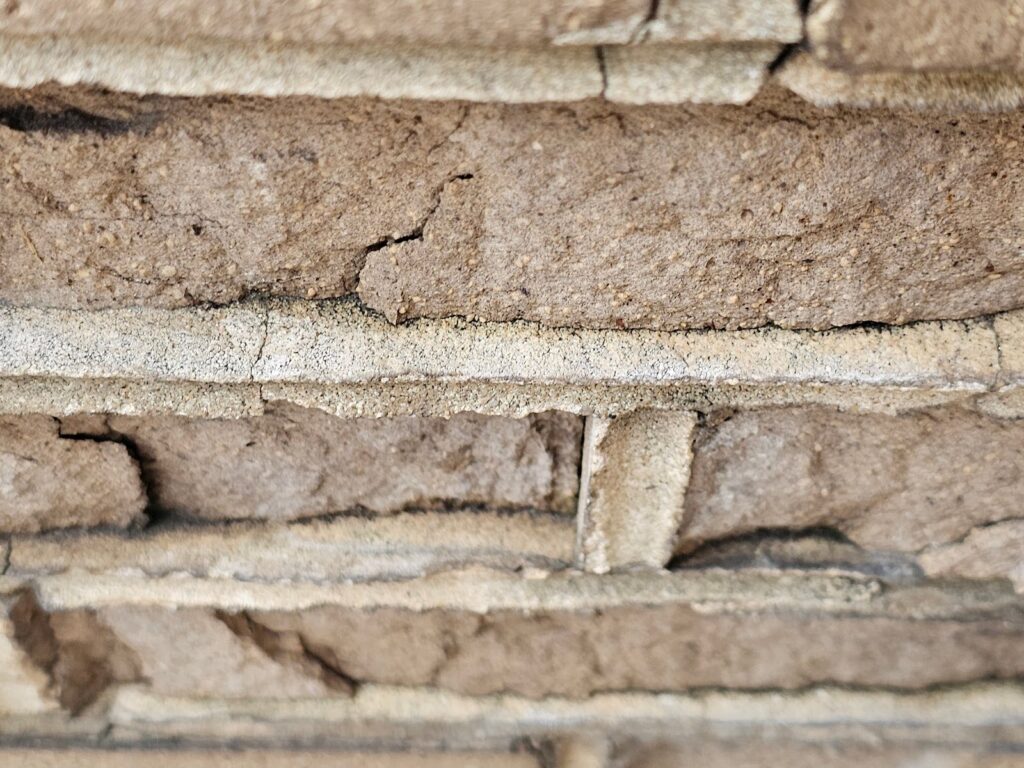
Here at the corner, even though a few of the bricks appear to not be damaged, by tapping with a metal object, like a hammer, even just tapping lightly, you can hear a difference in the sound which indicates that the brick has already been compromised and damaged. The process of sounding involves gently tapping the bricks and listening for the range or pitch of the sound. High pitch will indicate the brick is still largely intact while a low sound will indicate that there is delamination or separation of the surface or exposed face of the brick from the substrate below.
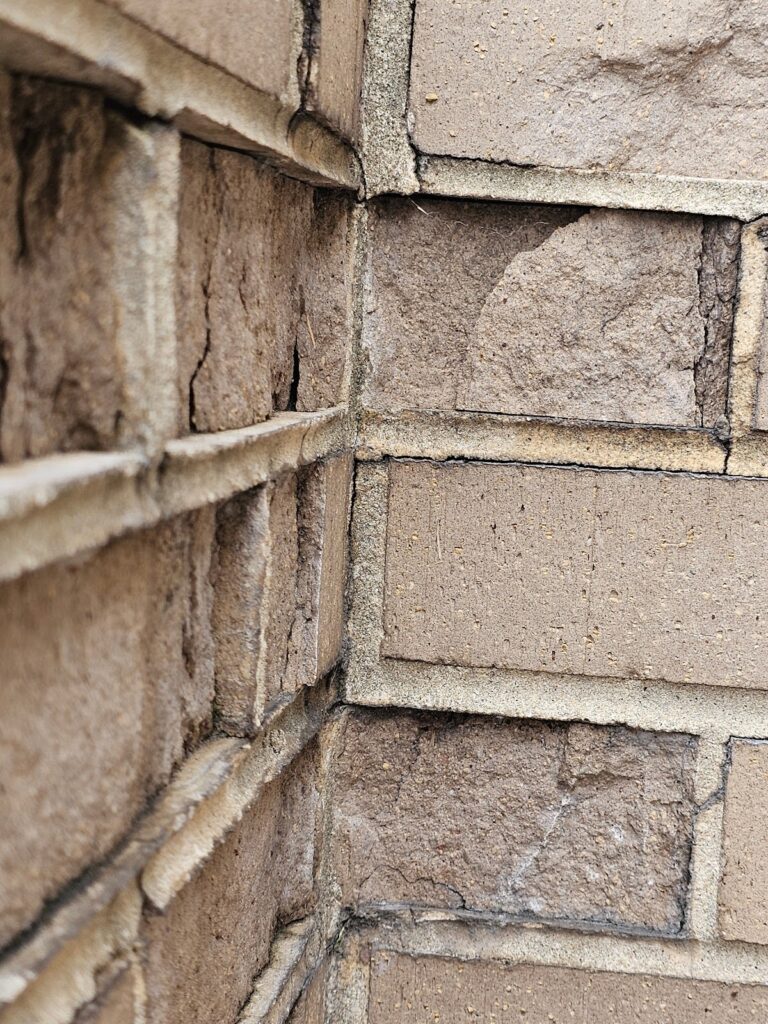
In the coming weeks, we’ll look at some of these such as, poor quality bricks, deterioration driven by salt, chemical reactions between building materials and natural weathering, in more detail.
If you are looking for a masonry restoration contractor that takes historic preservation seriously, and simply cares about doing things right, reach out to us. Our company can help.
You can reach us by telephone at (202) 796-7644 and you can reach us by email from the contact form on our website at https://duponttuckpointingmasonrydc.com/contact-us/.




